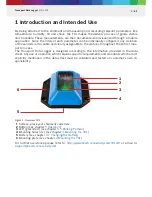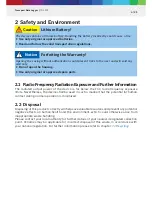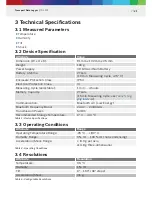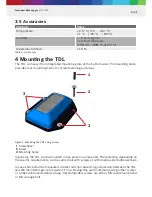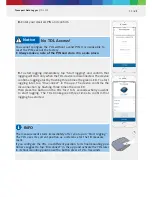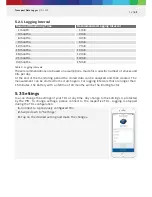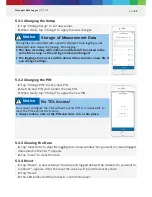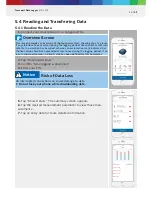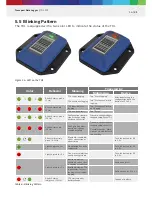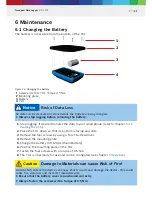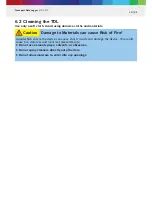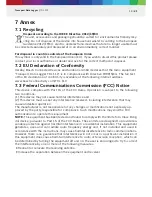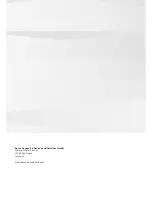
19 | 21
Transport Data Logger | TDL 110
7 Annex
7.1 Recycling
Disposal according to the WEEE Directive 2012/19/EU
The unit, accessories and packaging should be sorted for environmental friendly recy-
cling. Do not dispose of the device into household waste! According to the European
Guideline 2012/19/EU, electric and electronic devices that are no longer usable must
be collected separately and disposed of in an environmentally correct manner.
For disposal in countries outside of the European Union
This symbol is only valid in the European Union (EU). If you wish to discard this product please
contact your local authorities or dealer and ask for the correct method of disposal.
7.2 EU Declaration of Conformity
Hereby, Bosch Connected Devices and Solutions GmbH declares that the radio equipment
“Transport Data Logger TDL 110” is in compliance with Directive 1999/5/EG. The full text
of the EU declaration of conformity is available at the following internet address:
www.bosch-connectivity.com/TDL 110
7.3 Federal Communications Commission (FCC) Notice
This device complies with Part 15 of the FCC Rules. Operation is subject to the following
two conditions:
(1) This device may not cause harmful interference and
(2) This device must accept any interference received, including interference that may
cause undesired operation.
The manufacturer is not responsible for any changes or modifications not expressly ap-
proved by the party responsible for compliance. Such modifications may void the FCC
authorization to operate this equipment.
NOTE: This equipment has been tested and found to comply with the limits for a Class B dig-
ital device, pursuant to Part 15 of the FCC Rules. These limits are designed to provide rea-
sonable protection against harmful interference in a residential installation. This equipment
generates, uses and can radiate radio frequency energy and, if not installed and used in
accordance with the instructions, may cause harmful interference to radio communications.
However, there is no guarantee that interference will not occur in a particular installation. If
this equipment does cause harmful interference to radio or television reception, which can
be determined by turning the equipment off and on, the user is encouraged to try to correct
the interference by one or more of the following measures:
▶
Reorient or relocate the receiving antenna.
▶
Increase the separation between the equipment and receiver.

